Journey through the Indian Unusual Architecture, from egg-shaped buildings to pyramid-inspired structures, each showcasing the country’s vibrant creativity and rich heritage

Have you ever thought about what if building structures could have life and their personality? Trust me, you are not imagining – it’s the truth, and if you want a pinch to believe it, come to India.
Take Mumbai’s Cybertecture Egg – it’s not your breakfast but a futuristic marvel. Bangalore’s Infosys Pyramid channels high-tech elegance, while Hyderabad’s Fish Building swims against all architectural norms. Feeling adventurous? Rajasthan’s Chand Baori is waiting with thousands of steps – just to keep you fit!
India’s architectural landscape is a blend of ancient tradition and modern innovation, with structures that capture the imagination. From temples to corporate offices, these uniquely shaped buildings tell stories of creativity, culture, and craftsmanship.
The Fish Building, Hyderabad
The unofficially named ‘Fish Building’ serves as a regional office for India’s National Fisheries Development Board near Hyderabad. This four-story structure, inaugurated in April 2012, draws inspiration from Frank Gehry’s famous ‘Fish’ sculpture in Barcelona, completed in 1992.
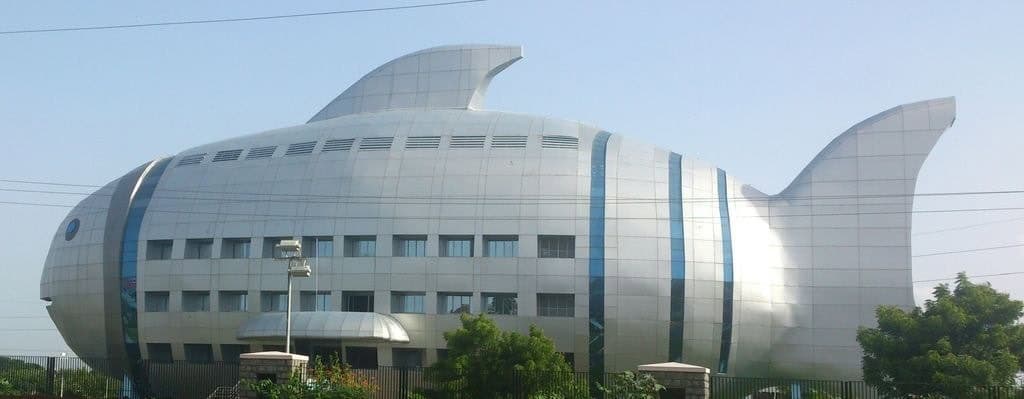
Embracing mimetic architecture, the building cleverly integrates fish-like elements, with the left pectoral fin functioning as shade over the entrance staircase and circular windows representing eyes. Despite Hyderabad’s inland location, the city was chosen as the headquarters for India’s fisheries department due to Telangana’s vast river catchment areas from the Godavari and Krishna rivers.
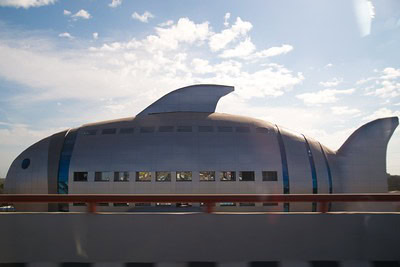
The building is covered in shiny stainless steel and stands on blue supports, glowing with blue and purple lights at night. This lighting effect makes it look like a giant fish swimming through the city. Its unique and creative design has made it a favourite landmark among locals, who love its special place in Hyderabad’s architecture.
Matrimandir, Auroville, Tamil Nadu
In January 1970, the Mother of the Sri Aurobindo Ashram, Mirra Alfassa asked French architect Roger Anger to design the Matrimandir, the spiritual centre of Auroville, known as the “Soul of the City.” Built over 37 years, this one-of-a-kind structure features a large, golden geodesic dome surrounded by twelve petal-shaped meditation rooms.
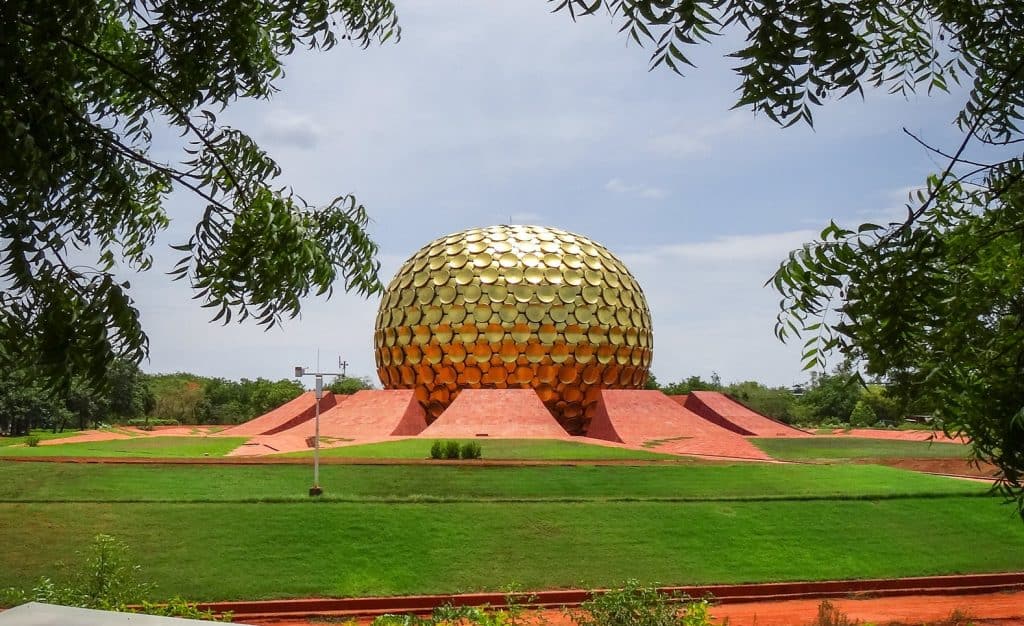
The dome, covered in golden discs that reflect sunlight, glows beautifully, making it a striking landmark in the peaceful area of Auroville. Inside, the Matrimandir houses the Inner Chamber, a quiet meditation hall with the world’s largest optically-perfect glass globe which creates a calming and otherworldly atmosphere. The four main pillars of the structure, each facing a compass direction, are dedicated to the four Divine Mother Aspects—Mahakali, Maheshwari, Mahalakshmi, and Mahasaraswati.
Around the dome, each petal-shaped meditation room symbolizes one of the Mother’s twelve Virtues, such as Sincerity, Humility, and Peace. The Matrimandir’s design harmoniously blends spiritual depth with architectural brilliance, making it an unforgettable symbol of Auroville.
The Floating Taj Lake Palace, Udaipur
The Taj Lake Palace in Udaipur is a stunning white marble palace that appears to float on the serene waters of Lake Pichola, making it one of the most unique sights in India.
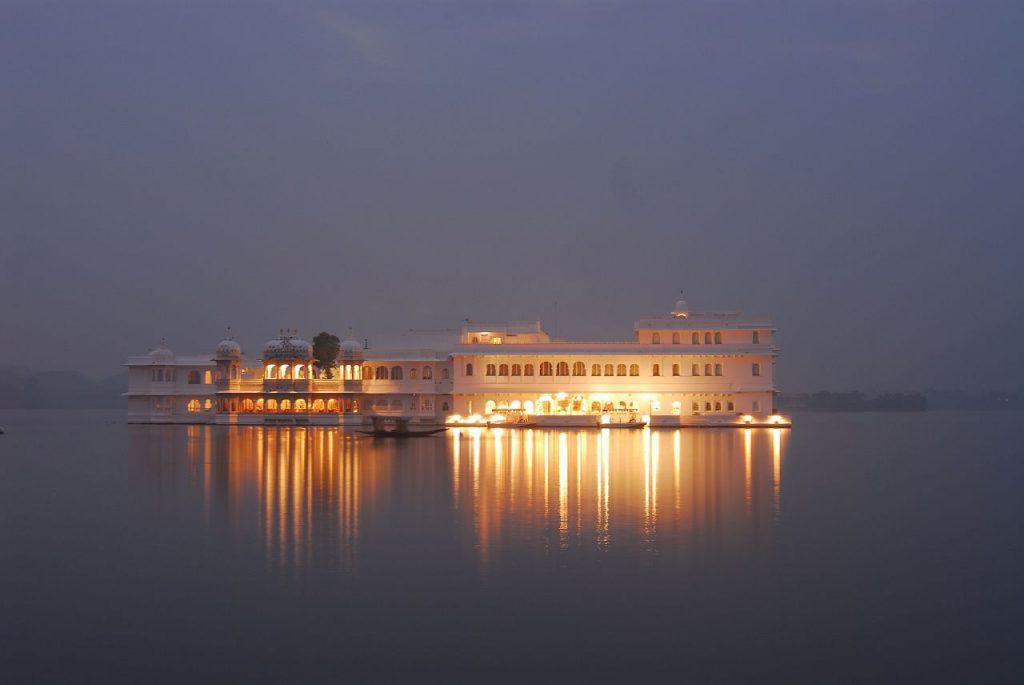
Constructed from Rajnagar marble transported over 50 miles by bullock carts, the Taj Lake Palace combines Mewar and Rajput architectural styles with subtle Mughal influences, featuring domes and turrets. During the 1857 Sepoy Mutiny, Maharana Swaroop Singh sheltered fleeing Europeans, protecting the island by destroying all nearby boats to ensure safety.
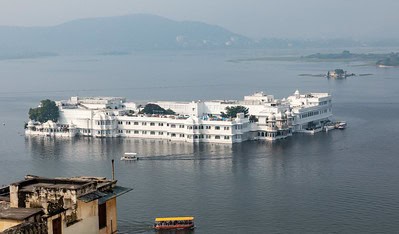
Built in 1746 by Maharana Jagat Singh II as a royal retreat, the palace creates a dreamlike scene, especially during sunrise and sunset when it shines softly against the lake. The palace is accessible only by boat, which adds to its secluded and magical feel.
The Zig-zag Chand Baori Stepwell, Rajasthan
Chand Baori, located in the village of Abhaneri in Rajasthan, is one of India’s most impressive step-wells and a unique architectural wonder.
Built in the 8th and 9th centuries by King Chanda of the Nikumbha dynasty, it was designed to store water in Rajasthan’s hot, dry climate.
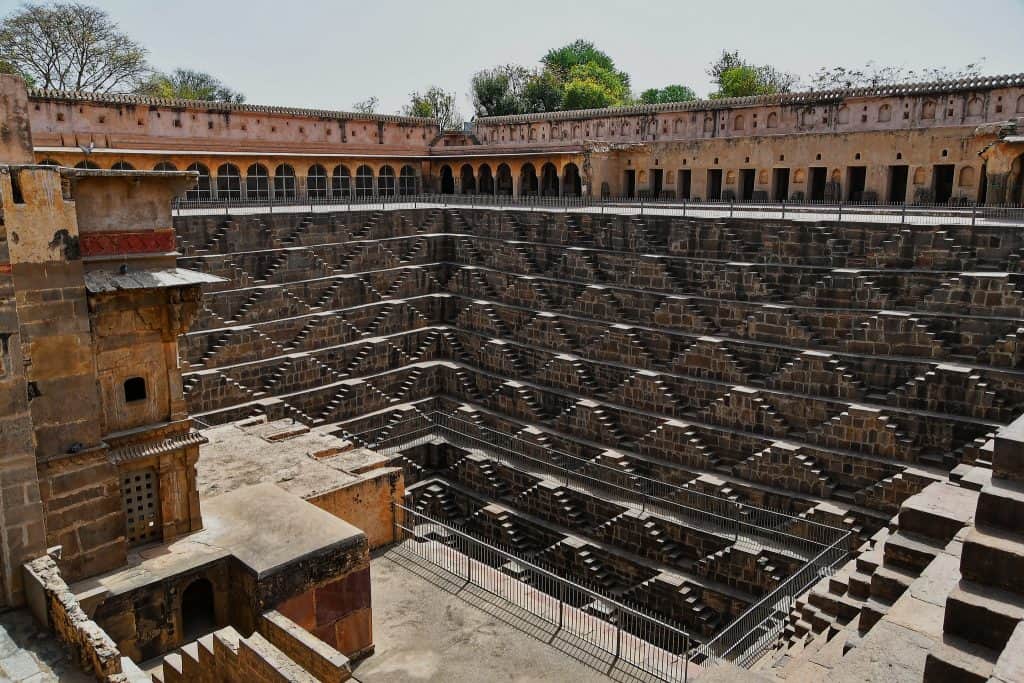
The stepwell has over 3,500 narrow steps arranged in a striking, symmetrical pattern across 13 levels, reaching nearly 100 feet down. This amazing design shows the creativity and skill of ancient Indian builders. Beyond being a water reservoir, Chand Baori served as a cool gathering spot for locals.
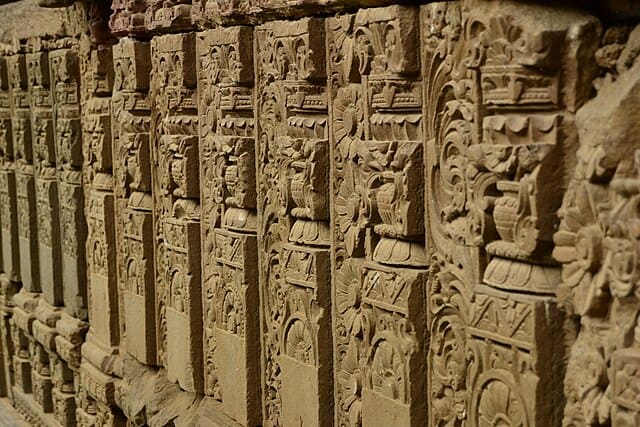
It’s also famous as a filming location for movies like Paheli and Bhool Bhulaiyaa, which added to its charm and popularity. Today, Chand Baori attracts visitors from around the world who are fascinated by its beauty, its history, and the glimpse it offers into India’s cultural heritage.
Infosys Pyramid, Bangalore
The Infosys Pyramid Building in Bangalore is a remarkable specimen of modern architecture and a key feature of the company’s visionary campus in Electronics City.
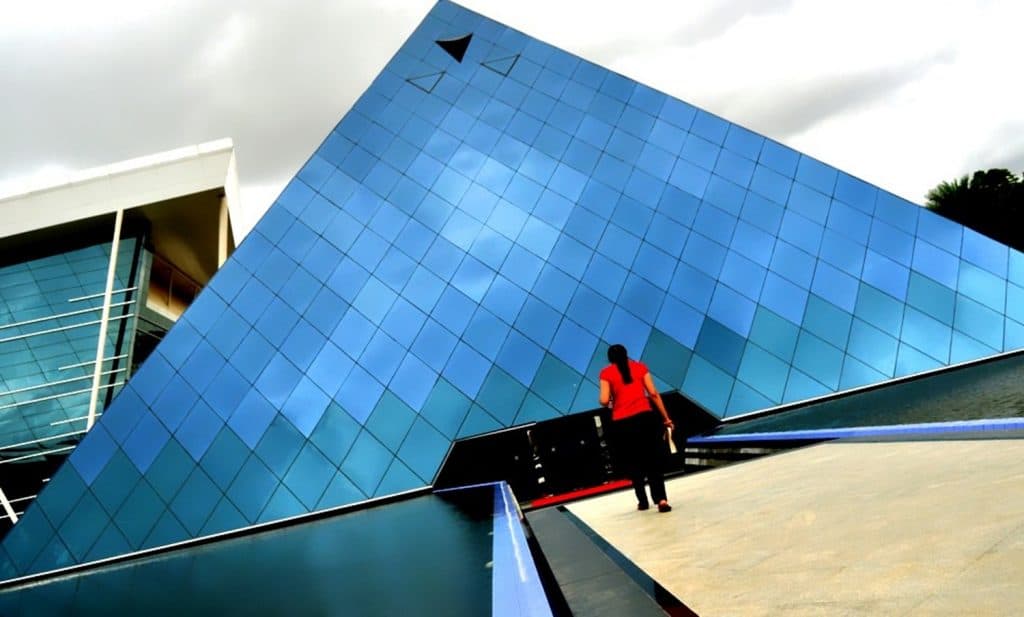
The idea for this iconic structure was born when Infosys CEO N. Narayan Murthy reached out to senior architect Naresh Venkataraman with a unique brief: “The capital assets of my business go home to sleep. Create an environment that will interest them and keep them comfortable at work.” Inspired by the Louvre Pyramid, the building’s glass facade not only lends a futuristic look but also maximises natural light, creating an open, bright, and energy-efficient workspace.
The pyramid’s design is both practical and symbolic, embodying Infosys’s commitment to sustainability and employee well-being. Inside, it houses state-of-the-art training rooms, conference halls, and collaborative spaces, fostering a culture of teamwork and learning.
These unusually shaped buildings reflect the country’s rich diversity in architecture, blending modern innovation with cultural heritage. They not only captivate with their unique designs but also showcase the nation’s evolving architectural identity, making them landmarks of inspiration and creativity across the world.
The Cybertecture Egg in Mumbai (under construction)
The Cybertecture Egg in Mumbai is a striking example of modern, eco-friendly architecture. Shaped like a giant egg, this building stands out for its bold design and commitment to sustainability and joins stunning architectural marvels in india.
Created by architect James Law, its oval shape helps capture natural light and reduces energy use, setting a high standard for green building practices.
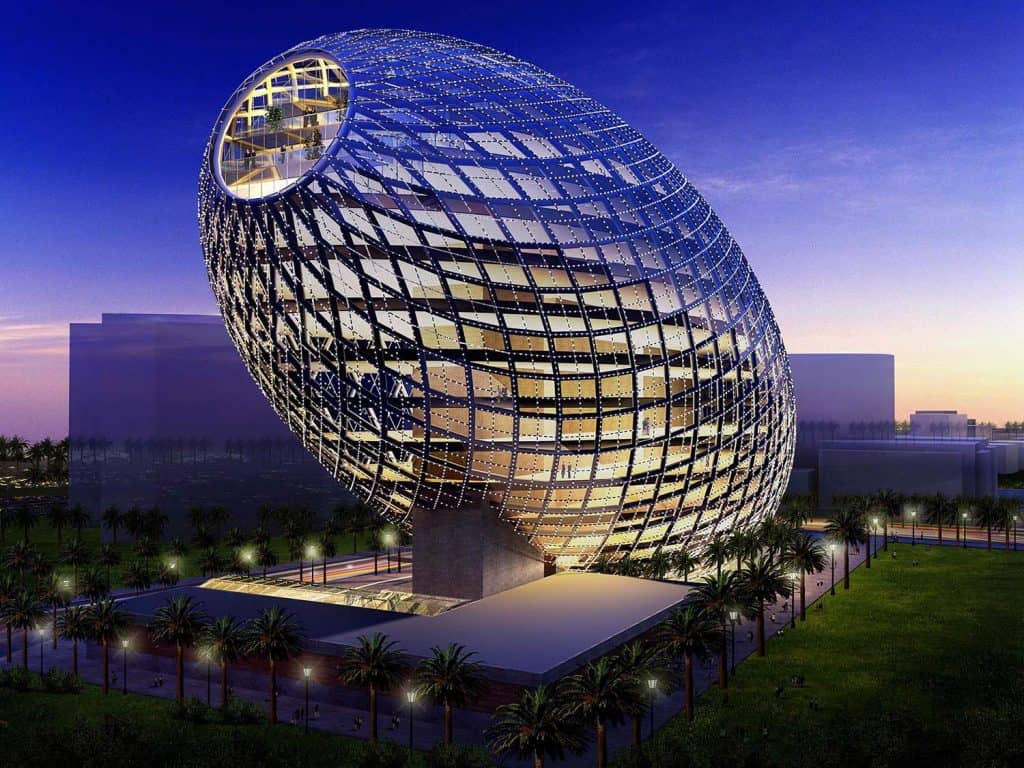
The structure is equipped with solar panels, water recycling systems, and smart technology to minimize its environmental impact. Its special exterior coating keeps the building cooler, reducing the need for air conditioning in Mumbai’s warm climate. Inside, features like air quality monitors and ergonomic spaces create a comfortable and productive work environment.
Now an icon on Mumbai’s skyline, the Cybertecture Egg shows how architecture can be both artistic and practical, blending creativity with sustainable living. It reflects India’s vision for a modern, environmentally conscious future in urban spaces.
Read more: Latest



